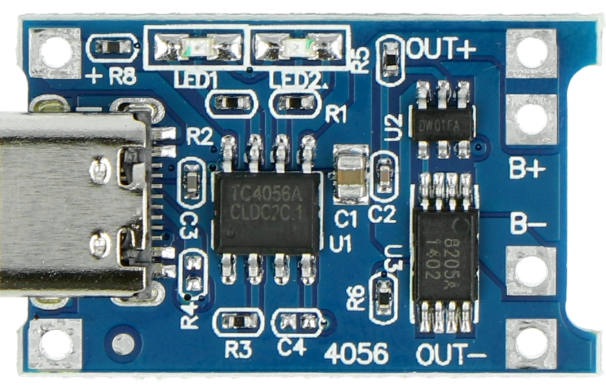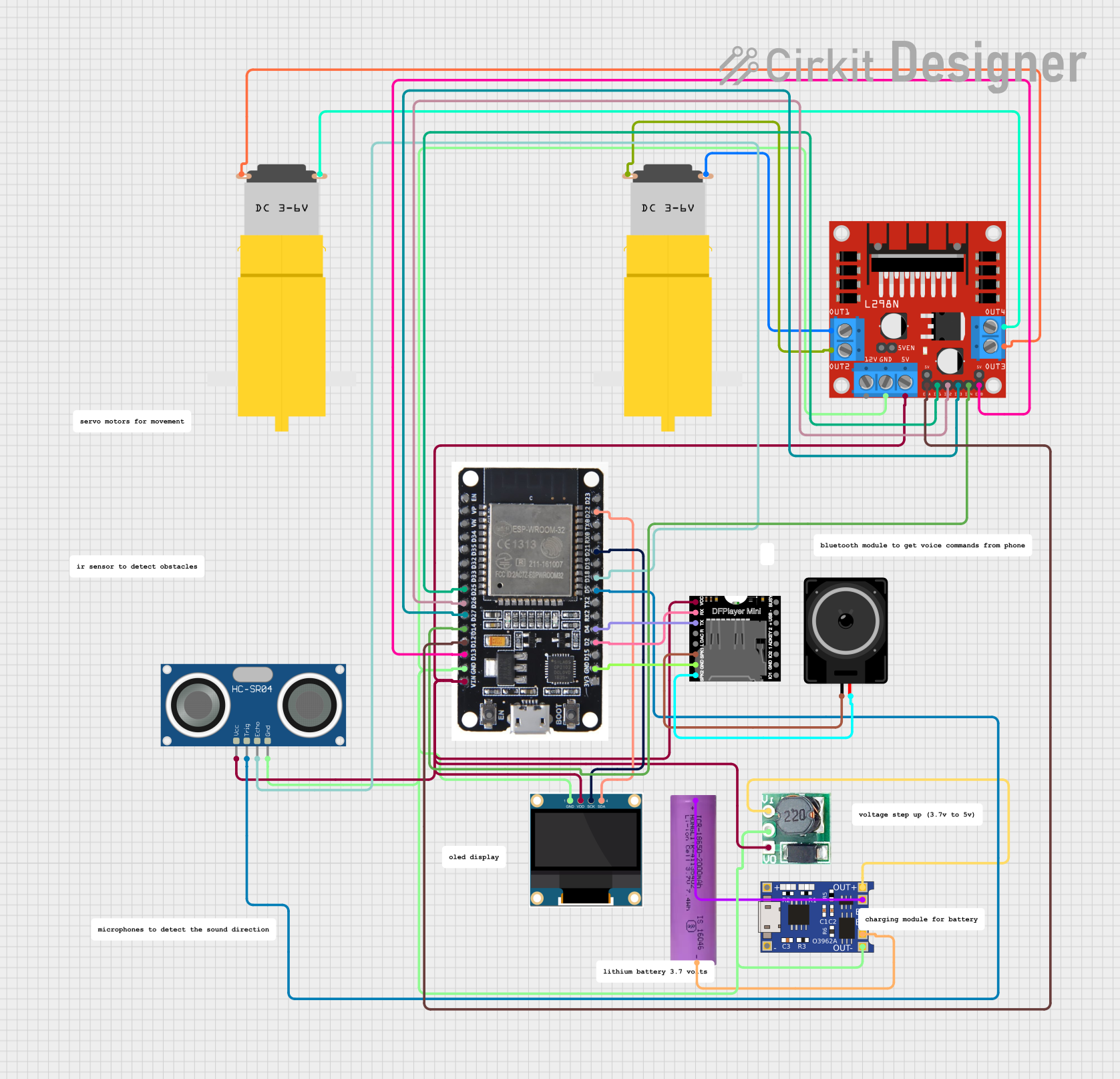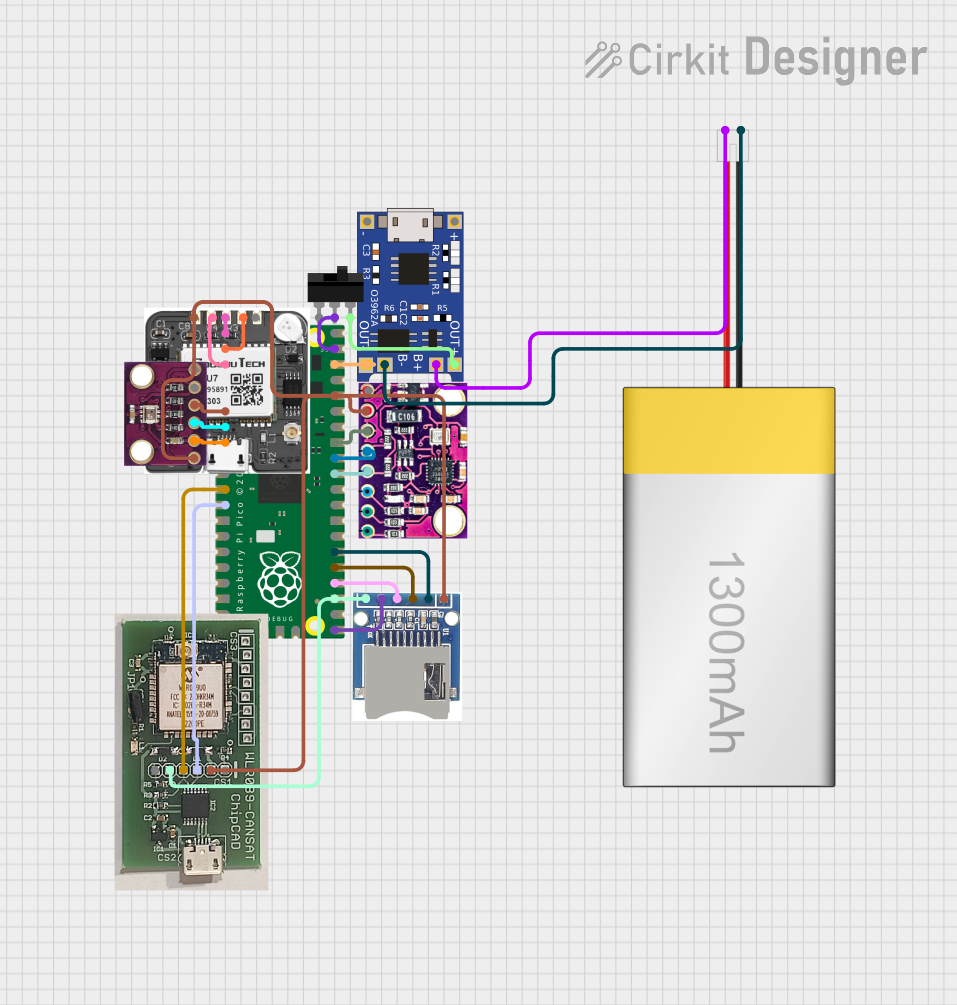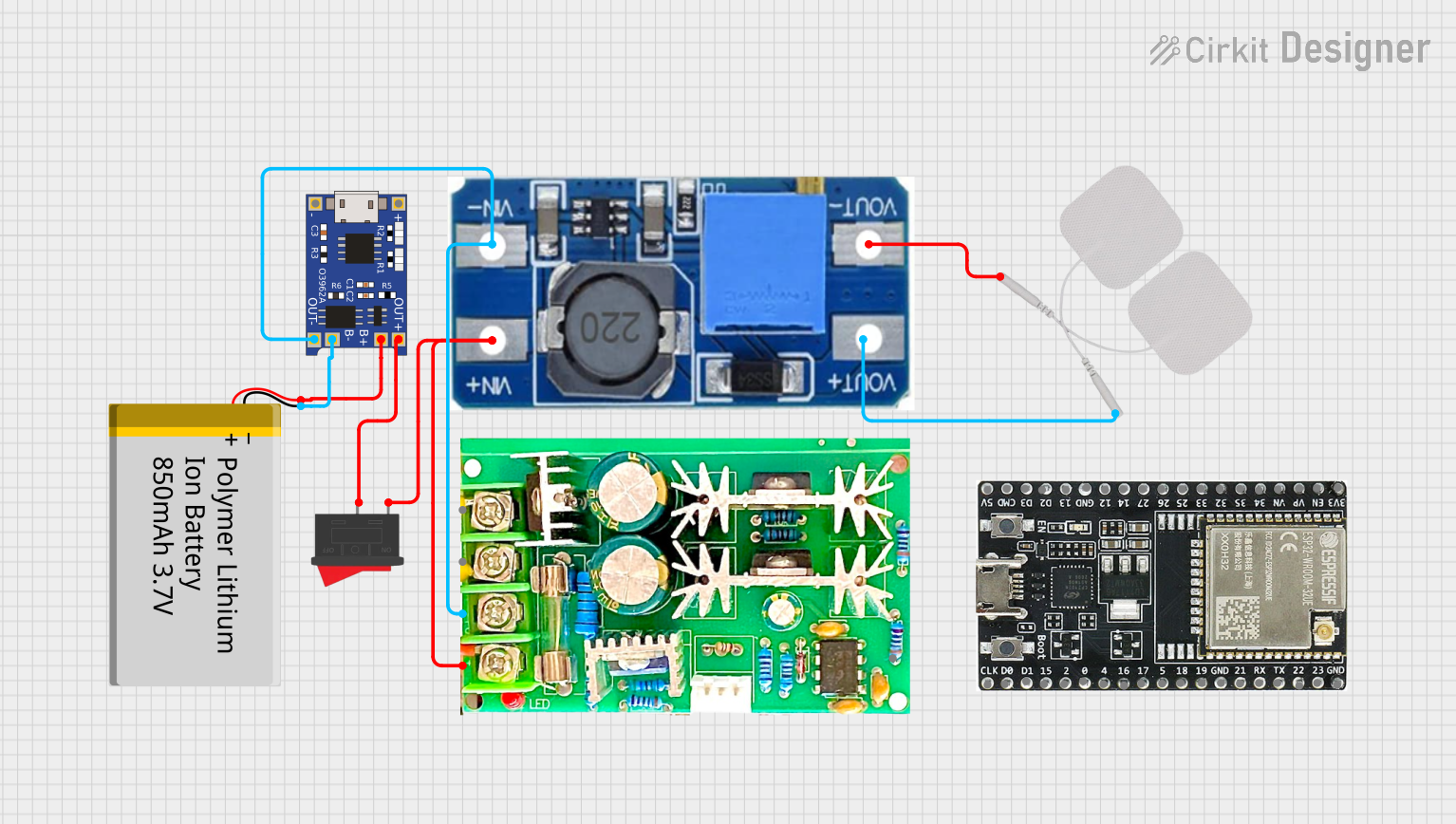
How to Use TP4056: Examples, Pinouts, and Specs

 Design with TP4056 in Cirkit Designer
Design with TP4056 in Cirkit DesignerIntroduction
The TP4056 is a lithium-ion battery charger IC manufactured by Makers with the part ID TP4036. It is designed to charge single-cell lithium-ion batteries using a constant current/constant voltage (CC/CV) charging method. The TP4056 is widely used due to its simplicity, efficiency, and built-in safety features such as thermal regulation and over-voltage protection.
Explore Projects Built with TP4056

 Open Project in Cirkit Designer
Open Project in Cirkit Designer
 Open Project in Cirkit Designer
Open Project in Cirkit Designer
 Open Project in Cirkit Designer
Open Project in Cirkit Designer
 Open Project in Cirkit Designer
Open Project in Cirkit DesignerExplore Projects Built with TP4056

 Open Project in Cirkit Designer
Open Project in Cirkit Designer
 Open Project in Cirkit Designer
Open Project in Cirkit Designer
 Open Project in Cirkit Designer
Open Project in Cirkit Designer
 Open Project in Cirkit Designer
Open Project in Cirkit DesignerCommon Applications
- Charging single-cell lithium-ion or lithium-polymer batteries
- Power banks and portable battery packs
- USB-powered charging circuits
- DIY electronics projects
- Wearable devices and IoT applications
Technical Specifications
The TP4056 is a versatile and reliable charging IC. Below are its key technical specifications:
| Parameter | Value |
|---|---|
| Input Voltage Range | 4.0V to 8.0V |
| Charging Voltage | 4.2V ± 1% |
| Maximum Charging Current | 1A (adjustable via external resistor) |
| Charging Method | Constant Current / Constant Voltage (CC/CV) |
| Thermal Regulation | Automatically reduces current to prevent overheating |
| Over-Voltage Protection | Yes |
| Battery Connection | Single-cell lithium-ion battery |
| Operating Temperature Range | -40°C to +85°C |
| Package Type | SOP-8 |
Pin Configuration and Descriptions
The TP4056 comes in an 8-pin SOP package. Below is the pinout and description:
| Pin Number | Pin Name | Description |
|---|---|---|
| 1 | TEMP | Temperature sense input. Connect to an NTC thermistor for battery temperature monitoring. |
| 2 | PROG | Programs the charging current via an external resistor. |
| 3 | GND | Ground connection. |
| 4 | VCC | Input power supply (4.0V to 8.0V). |
| 5 | BAT | Battery connection pin. Connect directly to the positive terminal of the battery. |
| 6 | STDBY | Open-drain status output. Indicates charging status (low = charging, high = standby). |
| 7 | CHRG | Open-drain status output. Indicates charging in progress (low = charging). |
| 8 | CE | Chip enable. Active low. Pull low to enable the IC, or high to disable it. |
Usage Instructions
The TP4056 is straightforward to use in a charging circuit. Below are the steps and considerations for using it effectively:
Basic Circuit Design
- Power Supply: Connect a 5V DC power source (e.g., USB) to the VCC pin. Ensure the input voltage is within the 4.0V to 8.0V range.
- Battery Connection: Connect the positive terminal of the lithium-ion battery to the BAT pin and the negative terminal to GND.
- Programming Charging Current: Use a resistor (RPROG) between the PROG pin and GND to set the charging current. The charging current (I_CHG) can be calculated using the formula: [ I_{CHG} = \frac{1200}{R_{PROG}} ] For example, a 1.2kΩ resistor sets the charging current to 1A.
- Status LEDs: Connect LEDs to the CHRG and STDBY pins (with appropriate current-limiting resistors) to indicate charging status.
Important Considerations
- Thermal Management: The TP4056 has built-in thermal regulation. However, ensure proper heat dissipation by using a PCB with adequate copper area around the IC.
- Battery Protection: Use a battery with built-in protection circuitry to prevent over-discharge or over-current conditions.
- Temperature Monitoring: Connect an NTC thermistor to the TEMP pin for battery temperature monitoring. If unused, connect TEMP to GND.
Example: Using TP4056 with Arduino UNO
The TP4056 can be used in conjunction with an Arduino UNO to monitor the charging status of a battery. Below is an example code snippet:
// TP4056 Status Monitoring with Arduino UNO
// Connect CHRG pin to Arduino pin 2 and STDBY pin to Arduino pin 3
const int chrgPin = 2; // CHRG pin of TP4056 connected to Arduino pin 2
const int stdbyPin = 3; // STDBY pin of TP4056 connected to Arduino pin 3
void setup() {
pinMode(chrgPin, INPUT); // Set CHRG pin as input
pinMode(stdbyPin, INPUT); // Set STDBY pin as input
Serial.begin(9600); // Initialize serial communication
}
void loop() {
int chrgStatus = digitalRead(chrgPin); // Read CHRG pin status
int stdbyStatus = digitalRead(stdbyPin); // Read STDBY pin status
if (chrgStatus == LOW) {
Serial.println("Battery is charging...");
} else if (stdbyStatus == LOW) {
Serial.println("Battery is fully charged.");
} else {
Serial.println("No battery connected or charging disabled.");
}
delay(1000); // Wait for 1 second before checking again
}
Troubleshooting and FAQs
Common Issues and Solutions
Problem: The battery is not charging.
- Solution: Check the input voltage at the VCC pin. Ensure it is within the 4.0V to 8.0V range.
- Solution: Verify the connection between the battery and the BAT pin. Ensure proper polarity.
Problem: The IC overheats during operation.
- Solution: Reduce the charging current by increasing the RPROG resistor value.
- Solution: Improve heat dissipation by adding a heatsink or increasing the copper area on the PCB.
Problem: Status LEDs do not light up.
- Solution: Check the connections to the CHRG and STDBY pins. Ensure the LEDs have appropriate current-limiting resistors.
Problem: The charging current is too low.
- Solution: Verify the value of the RPROG resistor. Use the formula ( I_{CHG} = \frac{1200}{R_{PROG}} ) to calculate the correct resistor value.
FAQs
Can I use the TP4056 to charge multiple batteries in series?
- No, the TP4056 is designed for single-cell lithium-ion batteries only. For multiple cells, use a dedicated multi-cell charger IC.
What happens if the input voltage exceeds 8.0V?
- The TP4056 has over-voltage protection, but exceeding the maximum input voltage may damage the IC. Always ensure the input voltage is within the specified range.
Can I disable the charging function?
- Yes, pull the CE pin high to disable the IC. Pull it low to enable charging.
Is the TP4056 suitable for fast charging?
- The TP4056 supports charging currents up to 1A, which is suitable for most single-cell lithium-ion batteries. For higher currents, consider alternative ICs.
This concludes the documentation for the TP4056.